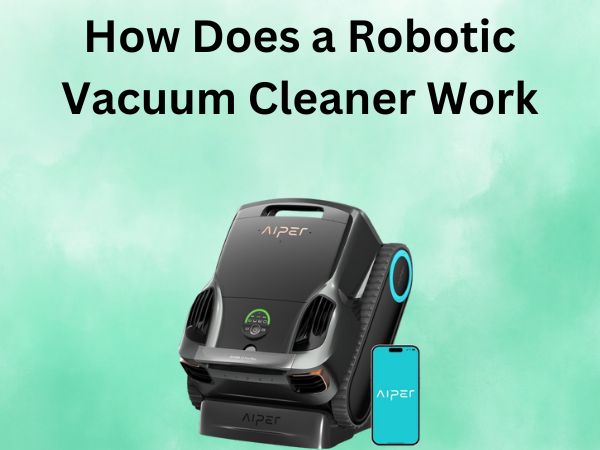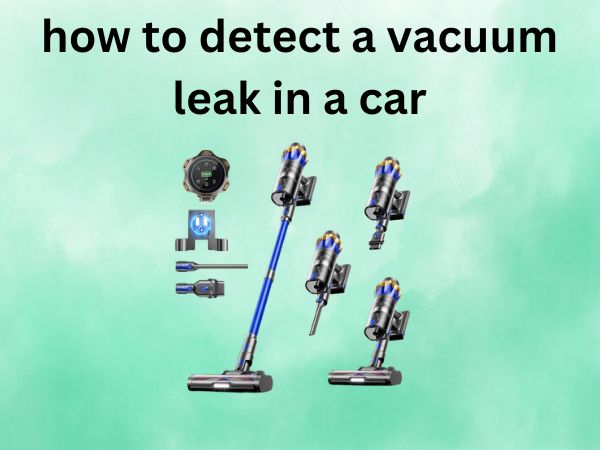How Does a Robotic Vacuum Cleaner Work? [With Smart Sensors]
If you’ve ever wanted a helping hand in keeping your floors immaculate, a robotic vacuum cleaner might be the
answer to your dreams. But how exactly do these nifty gadgets transform from a high-tech doodad into your
household superhero? Let’s dive into the mechanics of a robotic vacuum cleaner!
Robotic vacuum cleaners are small, autonomous machines designed to handle one of the most tedious household
chores: vacuuming the floor. Picture them as little soldiers, tirelessly marching across your home, ensuring
every nook and cranny is spotless. But their magic lies in their technology. So, what sorcery allows them to
clean your floors as you kick back and relax?
Table of Contents
Main Components of a Robotic Vacuum Cleaner
Like any superhero, a robotic vacuum has its own set of special tools. Here’s what makes them tick:
Sensors and Navigation
The key to the robotic vacuum’s prowess is its sensors. These sensors act like the robot’s eyes, ears, and
nose.
- Infrared Sensors: Help detect obstacles, stairs, and walls.
- Bump Sensors: Allow the vacuum to feel its way around your place, avoiding crashing into things.
- Cliff Sensors: Prevent the vacuum from taking a nosedive off steps.
Power Supply and Battery Life
The lifeblood of these vacuums is their batteries. Most robots sport lithium-ion batteries, known for their
long-lasting power. After a day’s work, the vacuum trots off to its charging dock for a well-earned rest.
Cleaning Mechanisms
How does a robotic vacuum actually clean? Let’s break it down:
Brush Rollers and Side Brushes
These components sweep and gather dirt. Think of them as the robotic dance team, spinning and brushing in sync
to trap dust, debris, and hair.
Suction Power and Dirt Collection
The vacuum sucks up the collected debris through its main intake, depositing everything into a built-in dustbin.
You’ll find that some vacuums offer adjustable suction power to conserve battery and reduce noise.
Obstacle Detection and Avoidance
Getting stuck is not an option for robotic vacuums. Their sleek design and agile movements allow them to navigate
around furniture and other obstacles with the grace of a seasoned ballet dancer.
Mapping Technology
Many modern models use advanced mapping technology to create a layout of your home. Isn’t that fascinating?
They’ll remember your floor plan and use it to plot the most efficient cleaning path each time. Some even
recognize no-go zones, sparing your pet’s favorite resting place.
Scheduling and Automation Features
Want your floors cleaned while you’re out at a meeting? Set a schedule! Whether through onboard buttons or a
smartphone app, scheduling is just like setting your Monday morning alarm—only more fun!
Wi-Fi Connectivity and Smart Home Integration
Link your vacuum to a Wi-Fi network, and suddenly, it’s compatible with the rest of your smart home. Just a
simple voice command to Alexa or Google Assistant, and off it goes to battle the dust bunnies!
Maintenance and Upkeep
Even superheroes need a bit of TLC. Regular maintenance includes:
- Emptying the dustbin after every few runs
- Cleaning the filter monthly
- Checking the brushes for tangled hair
Limitations of Robotic Vacuums
While they can be quite impressive, robotic vacuums are not without their quirks. They’re more sensitive than
traditional vacuums and may struggle with high-pile carpets or complex room layouts.
Environmental Impact
Most robotic vacuums are energy-efficient, making them more environmentally friendly than traditional models.
Still, they require components that could be improved in sustainability, especially with battery disposal.
Cost vs. Benefits Analysis
Investing in a robotic vacuum can mean shelling out a few hundred dollars. However, the freedom and time you’ll
gain may be well worth the price. Consider it an investment in more leisure-filled weekends.
Conclusion
In the grand scheme of household chores, robotic vacuum cleaners shine brightly as helpful allies. They’re an
amalgamation of modern ingenuity, designed to ease the burden of daily cleaning. From efficient sensors to
seamless smart integration, these robots are more than just devices—they’re a testament to how technology can
improve our lives. So, are they worth inviting into your home? You be the judge!
FAQs
What type of floors can a robotic vacuum cleaner handle?
Robotic vacuums work best on hard floors like tile, hardwood, and laminate, but many are also capable of handling
low-pile carpets. However, high-pile carpets may pose a challenge.
Can a robotic vacuum replace a traditional vacuum?
While robotic vacuums excel at maintenance cleaning, they might not completely replace traditional vacuums for
deep cleaning tasks, especially in households with pets.
How often should I run my robotic vacuum?
The frequency depends on your lifestyle and needs, but running it several times a week often keeps most homes
adequately clean.
Do robotic vacuums require Wi-Fi to operate?
No, Wi-Fi is primarily for remote operation and scheduling via apps. Most robotic vacuums can operate without
internet connectivity, using onboard buttons.
Do robotic vacuums make a lot of noise?
Robotic vacuums are generally quieter than traditional vacuums, making them suitable for running during the day
without causing much disturbance.



![5 Best Cordless Vacuum Cleaners for Pet Hair [In 2025]](https://bathroomexplorer.com/wp-content/uploads/2025/06/best-cordless-shark-vacuum-for-pet-hair-1.jpg)


